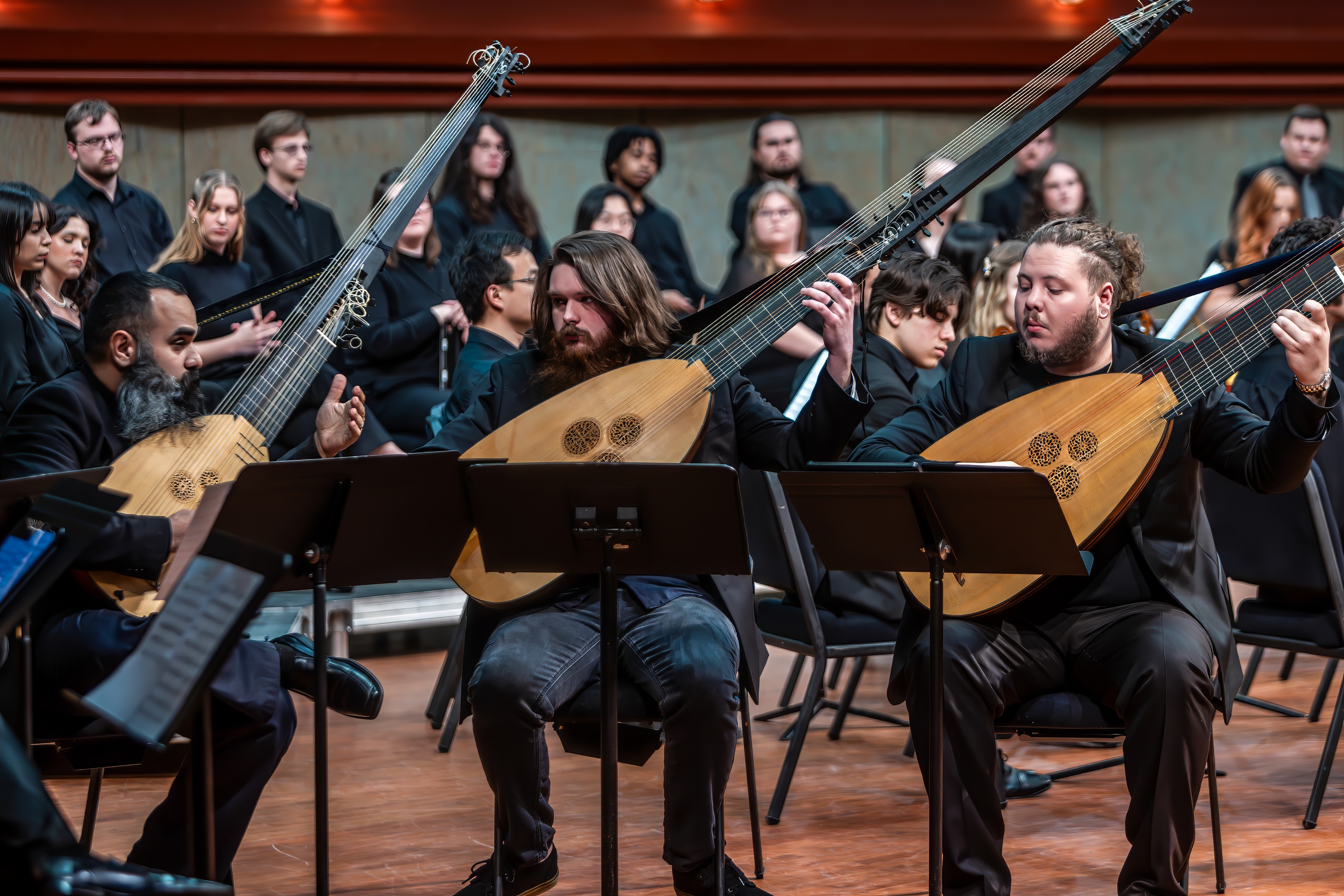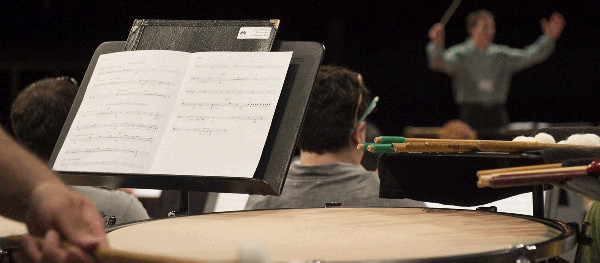(3.1) College of Music Overview
Music has been a prominent part of the curriculum and campus life since the University was founded in 1890. Eliza Jane McKissack served as the first director of Conservatory of Music, a part of the Texas Normal College and Teachers Training Institute which was originally housed in facilities located on the northwest corner of the Denton Courthouse Square. The institute’s president, Joshua C. Chilton, taught History or Music and Theory of Sound as part of the conservatory’s faculty. A succession of directors followed McKissack through the late 1930s, including Lillian May Parrill (1915-1938) who also conducted the College Choir, which later became the A Cappella Choir.
Beginning in 1938, the College of Music saw dramatic growth and sustained success. Under Dean Wilfred Bain (1938-47) enrollment grew from 25 to 400, key faculty were hired, the first jazz degree was proposed, and the Department of Music became a School of Music. Under Dean Walter Hodgson (1947-58), the BM in Jazz Studies and the Ph.D. in musicology were established; also during his tenure, UNT was desegregated (1954). Under Dean Kenneth Cuthbert (1958-74) a sizable music building, the old part of today’s edifice, was completed and the Doctor of Musical Arts degree was created. Under Dean Marceau Myers (1974-87) the present music complex was built, enrollment topped 1,500 students, and the school’s ensembles received wide acclaim throughout the state and the country.
With the arrival of Robert Blocker as dean (1988 – 1991), a new era began. The school instituted a decentralized organizational model, based on the creation of eight divisions. In light of the pressing need for scholarships, building an endowment became a priority. Additionally, a new performance facility became a high priority, and in 1999 the Murchison Performing Arts Center was opened under the leadership of Dean David Shrader (1992 – 1999).
In the new millennium, the College of Music continued to build on its role as a national and international leader in the arts and education. During Dean James Scott’s tenure (2001 – 2015), endowments and scholarships grew, the faculty increased in number and international prominence, programs were strengthened, international connections were increased, chair positions were professionalized, a new interdisciplinary research cluster was created, and facilities improved in ways large and small.
In August 2016, John W. Richmond assumed the deanship of the College of Music, now one of the largest and most respected music schools in the United States. As we look to the future, it is essential that the College of Music remain focused on its mission and vision while continuing its tradition of leadership and innovation in the arts and education.
(3.2) College of Music Mission Statement
The mission of the UNT College of Music is to serve our diverse musical culture with excellence, integrity and imagination.
(3.3) College of Music Vision Statement
The vision of the UNT College of Music is to provide leadership, artistry, and expertise to every facet of the music profession.
(3.4) College of Music Academic Divisions and Areas
College of Music Divisions
Divisions are the basic organizational units of the College of Music. The divisions attend to all business related to theirrespective areas of responsibility and make recommendations to the appropriate College of Music committee oradministrator concerning curriculum, policy, budget, and other matters pertinent to the mission of the College of Music.
Currently, there are eight divisions in the College of Music:
Division of Composition Studies
Division of Conducting and Ensembles
Division of Instrumental Studies
Division of Jazz Studies
Division of Keyboard Studies
Division of Music Education
Division of Music History, Theory, and Ethnomusicology
Division of Vocal Studies
College of Music Areas
In divisions containing disparate curricular offerings, areas may be established to better define these particularofferings. Areas may be established, combined, or eliminated according to majority division vote. Currently, thefollowing areas have been established within the College of Music:
|
Division of Conducting and Ensembles |
Choral Studies, Early Music, Opera, Orchestral Studies, Wind Studies |
|
Division of Instrumental Studies |
Brass, Percussion, Strings, Woodwinds |
|
Division of Keyboard Studies |
Collaborative Piano, Harpsichord/Fortepiano, Organ, Piano |
|
Division of Music History, Theory and Ethnomusicology |
Ethnomusicology, Music History, Music Theory |
(3.5) College of Music Administration
The structure of the College of Music administration is governed by the College of Music Charter and Bylaws. The roles described in that document are the Dean, Associate/Assistant Deans, Faculty Chair, Directors of Undergraduate and Graduate Studies, Division Chairs, Area Coordinators and Center Directors.
(3.6) College of Music Committees
The standing committees of the College of Music are determined by the College of Music Charter and Bylaws. Ad hoc committees may be created by the faculty or the dean to address specific issues. The standing committees named in the Charter are the Faculty Advisory Committee, External Advisory Committees, Staff Advisory Committee, Student Advisory Committee, Council of Division Chairs, Graduate Council, Graduate Degree Committees, Undergraduate Curriculum Committee, College Reappointment, Tenure and Promotion Committee and Admission Committee. Refer to the College of Music Charter and Bylaws for additional details.






